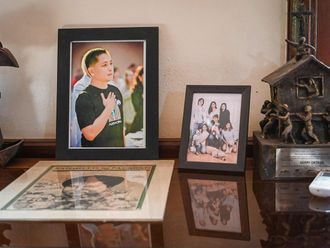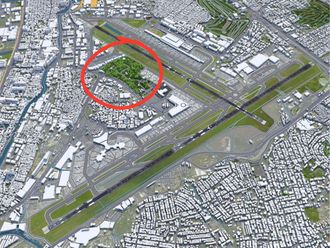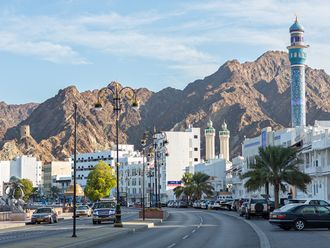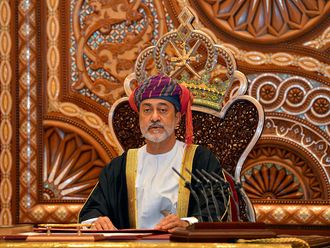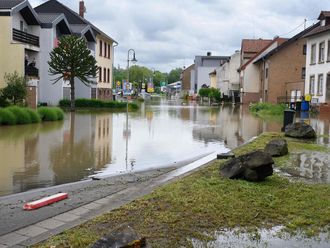Guiuan, Philippines: Grieving survivors of a monster typhoon that smashed into the mainly Catholic Philippines flocked to shattered churches Sunday, as scaled-up relief efforts strived to reach vulnerable, isolated communities.
The church services offered a brief respite from the daily battle for survival into which millions of people were plunged after the November 8 super storm, packing some of the strongest winds ever recorded, ripped their world apart.
The United Nations upped its estimate for the number of people displaced from 1.9 million to 3 million, while the official death toll stood at 3,681 with 1,186 people missing.
After a slow start, an enormous international relief operation picked up momentum over the weekend, bringing food, water and medical supplies and airlifting basic necessities to remote, mountainous areas.
President Benigno Aquino, who has been criticised over the speed of his government’s response, called for understanding as he toured some of the worst-hit areas on Sunday.
“Please have patience. These affected areas are really spread out,” Aquino said, adding: “Don’t lose hope.”
About 300 people in Guiuan, the first town to be hit by Super Typhoon Haiyan, attended Sunday mass in the courtyard of the ruined 400-year-old Immaculate Conception church, whose damaged bells had to be rung by striking them with an iron bar.
Father Arturo Cablao commended the community’s strength of spirit, as parishioners — some of them silently weeping — stood among twisted roofing sheets, glass shards and mud.
About 80 per cent of the Philippines’ 100 million people are Catholic, a legacy of Spanish colonial rule, and their steadfast faith was on display throughout the central islands that were devastated by Haiyan.
“If there is no God, who else is there? He is our only hope,” Bibeth Sabulao said after she received communion at the service in Guiuan.
In Tacloban, one of the hardest-hit cities, hundreds of devotees sat on flood-soaked pews at the 124-year-old Santo Nino church, which had its roof ripped off by Haiyan’s ferocious winds.
Violeta Simbulan, 63, said the priest’s sermon promising that God would always be there was a comfort after losing two cousins and an aunt in the disaster.
“Yes, I was reassured. As long as I have faith and constantly pray to God,” Simbulan said.
As the morning masses were held, the international relief effort continued to build, consolidating its initially tenuous grip on the catastrophic situation.
“The arrival was pretty slow at first but it is picking up extremely well,” World Food Programme emergency coordinator Samir Wanmali said at Tacloban airport.
The operation was galvanised by the arrival Thursday of the USS George Washington aircraft carrier, which immediately began airlifting large volumes of relief supplies to inland airstrips and isolated communities.
A British warship, the HMS Daring, arrived on Sunday, and was to be followed by the helicopter carrier HMS Illustrious - the largest ship in the British navy.
Japan has also confirmed it will send almost 1,200 troops to join relief efforts along with three warships, 10 planes and six helicopters - its military’s single largest aid deployment.
The United Nations and other relief workers say the death toll will climb much higher over the coming months as a full assessment is made of the 600-kilometre stretch of islands hit by Haiyan.
If the worst fears are realised, Haiyan could be the country’s deadliest natural disaster, surpassing the 1976 Moro Gulf tsunami that killed between 5,000 and 8,000 people on the southern island of Mindanao.
WFP country director Praveen Agrawal said the focus over the next few days would be on expanding food aid deliveries to those living on smaller islands and hard-to-access mountain areas.
Dramatic video footage emerged Sunday showing the destructive size and power of the storm surge as it slammed into the Samar coastal town of Hernani, engulfing and sweeping away houses.
“It was like a huge tsunami,” said Nickson Gensis, a staff member of the child development agency Plan International who recorded the surge from the second floor of a house that withstood the impact.
UN Secretary General Ban Ki-moon said Saturday that the super typhoon was an “urgent warning” to mankind of the consequences of climate change.
Although many devotees in the Philippines were seeking comfort in God on Sunday, for some the disaster was proving a severe test of their faith.
Father Edwin Bacaltos, the parish president at the Redemptorist Church in Tacloban, said that people had repeatedly asked him why the catastrophe had occurred.
“I didn’t give them any theological answer. I just listened and kept quiet. It’s not the time to rationalise,” he said.
Bacaltos said he also had struggled in the face of the devastation and human loss.
“But this is not God’s punishment. I have told them that God still loves us. He will not abandon us,” he said.



